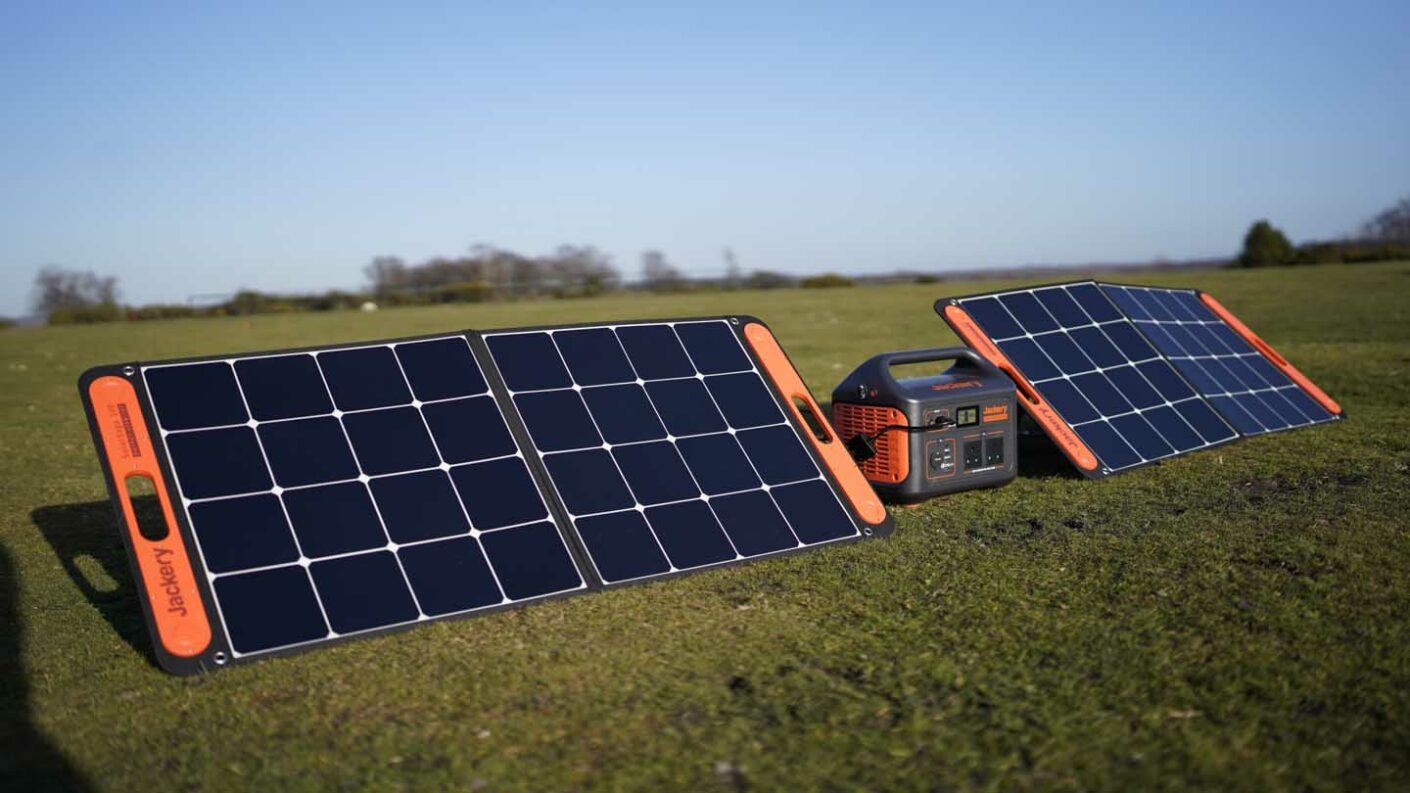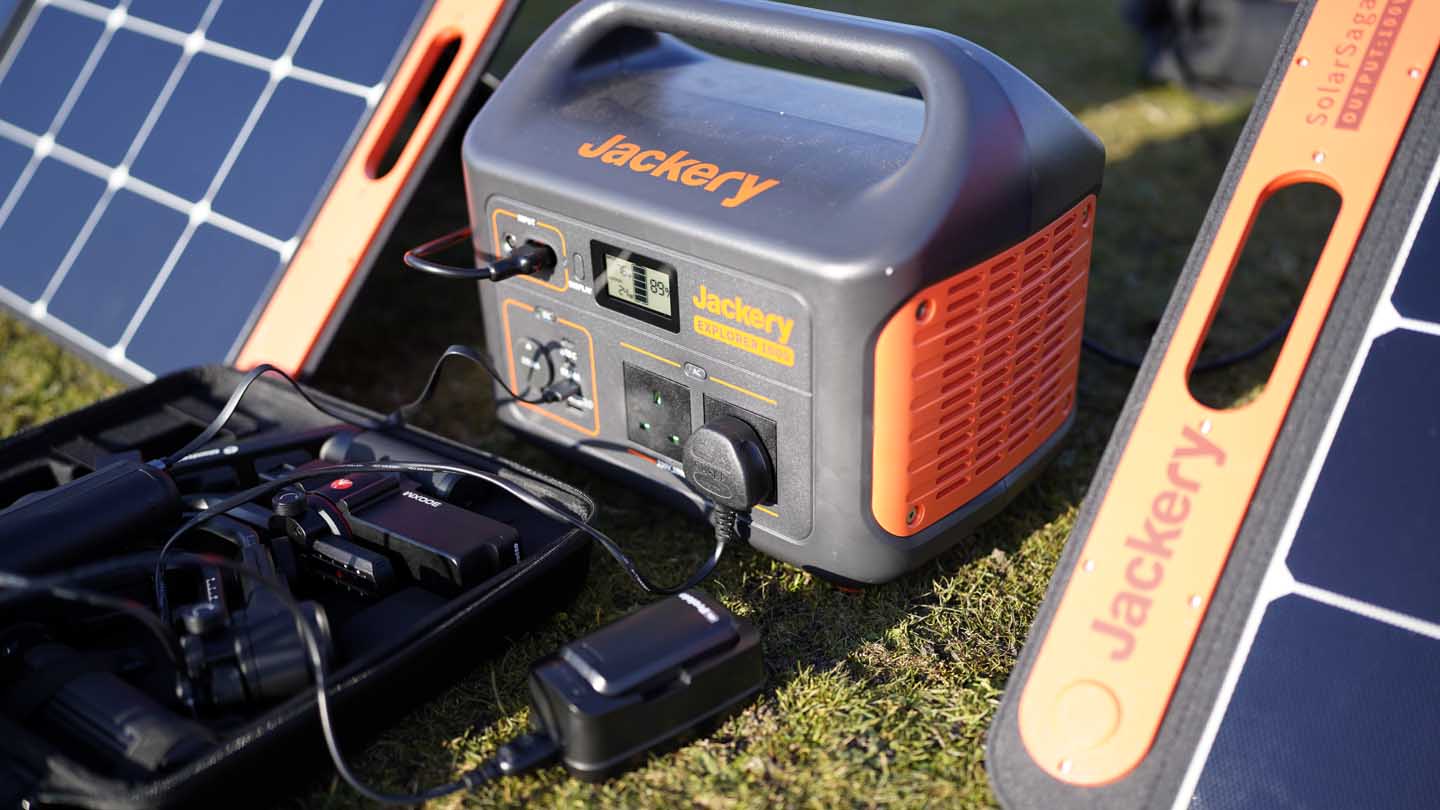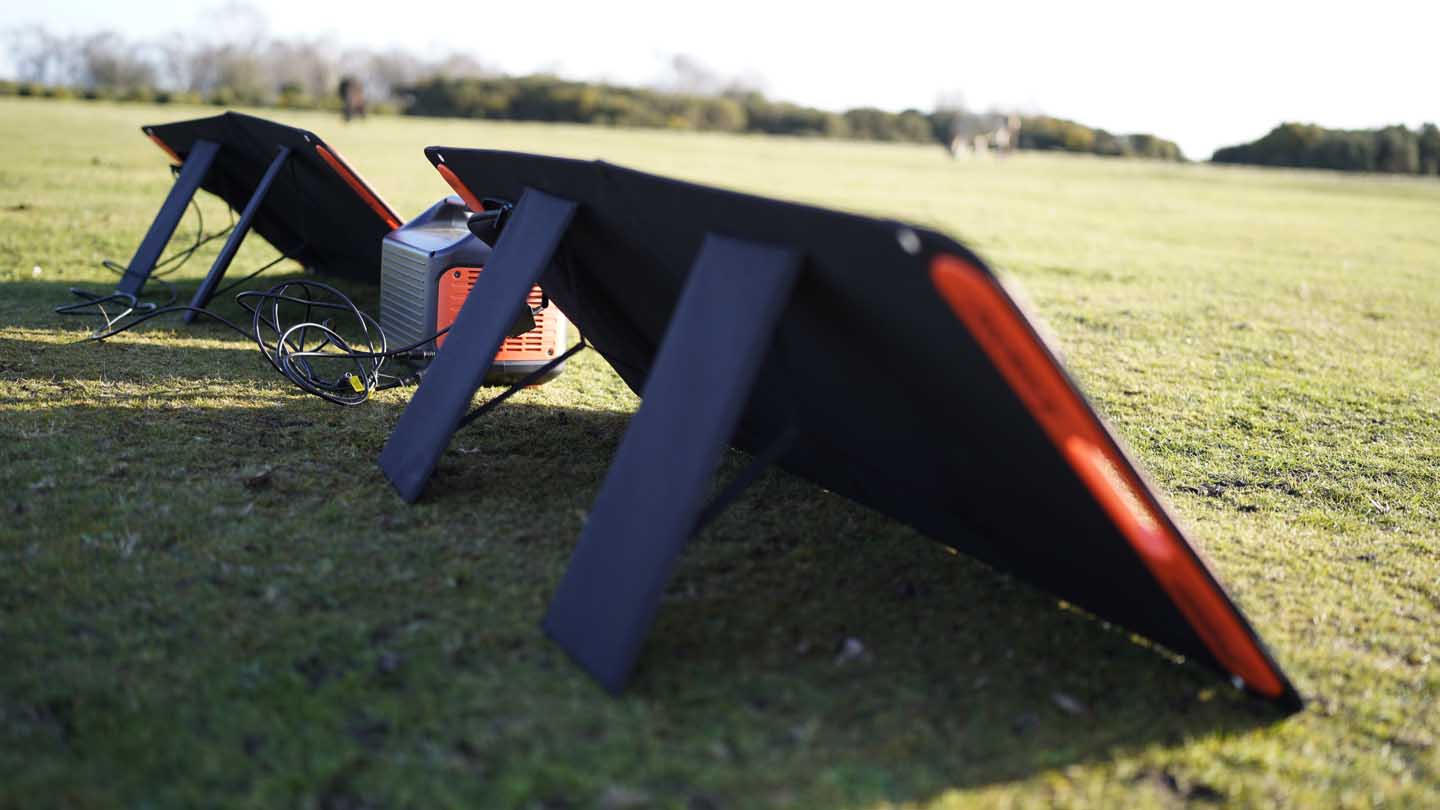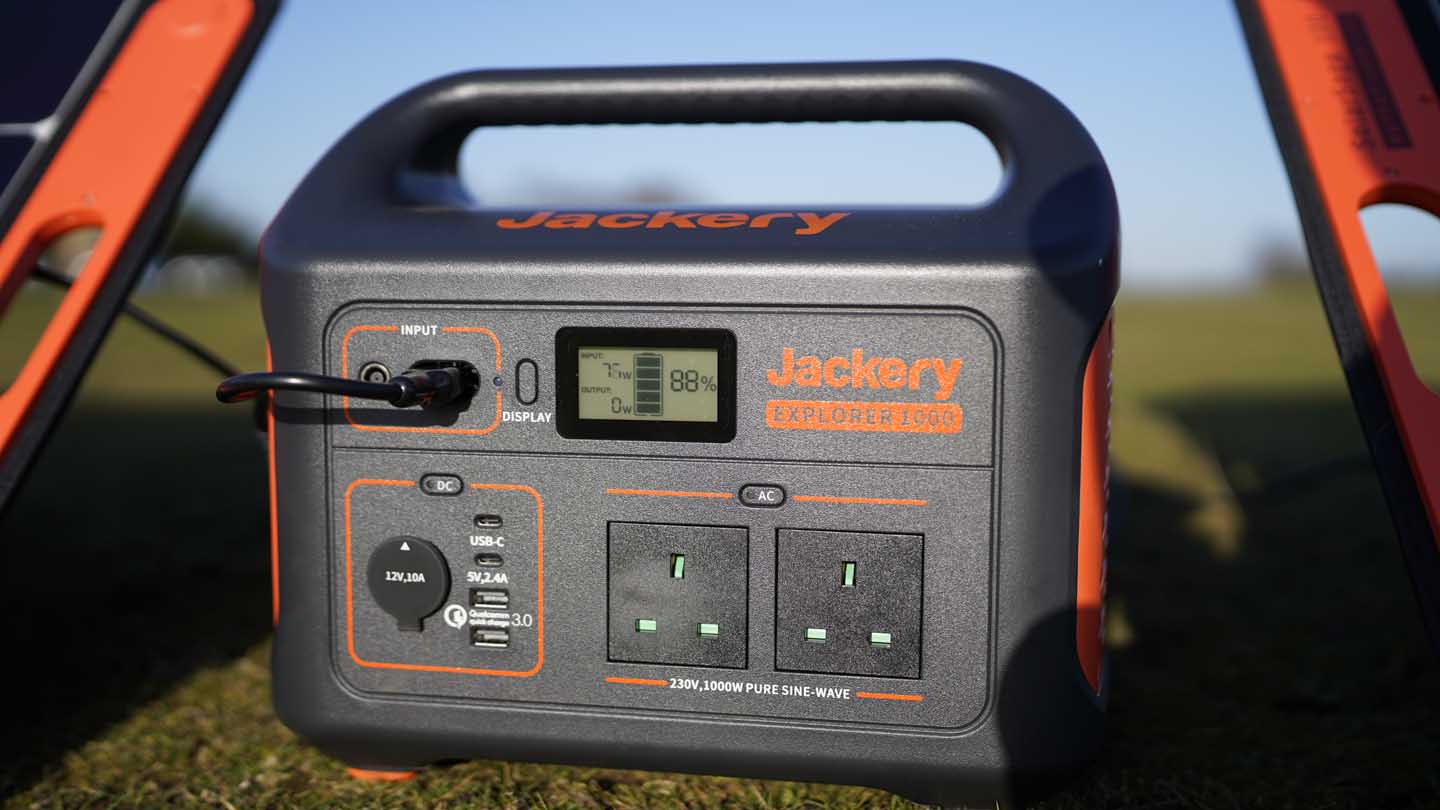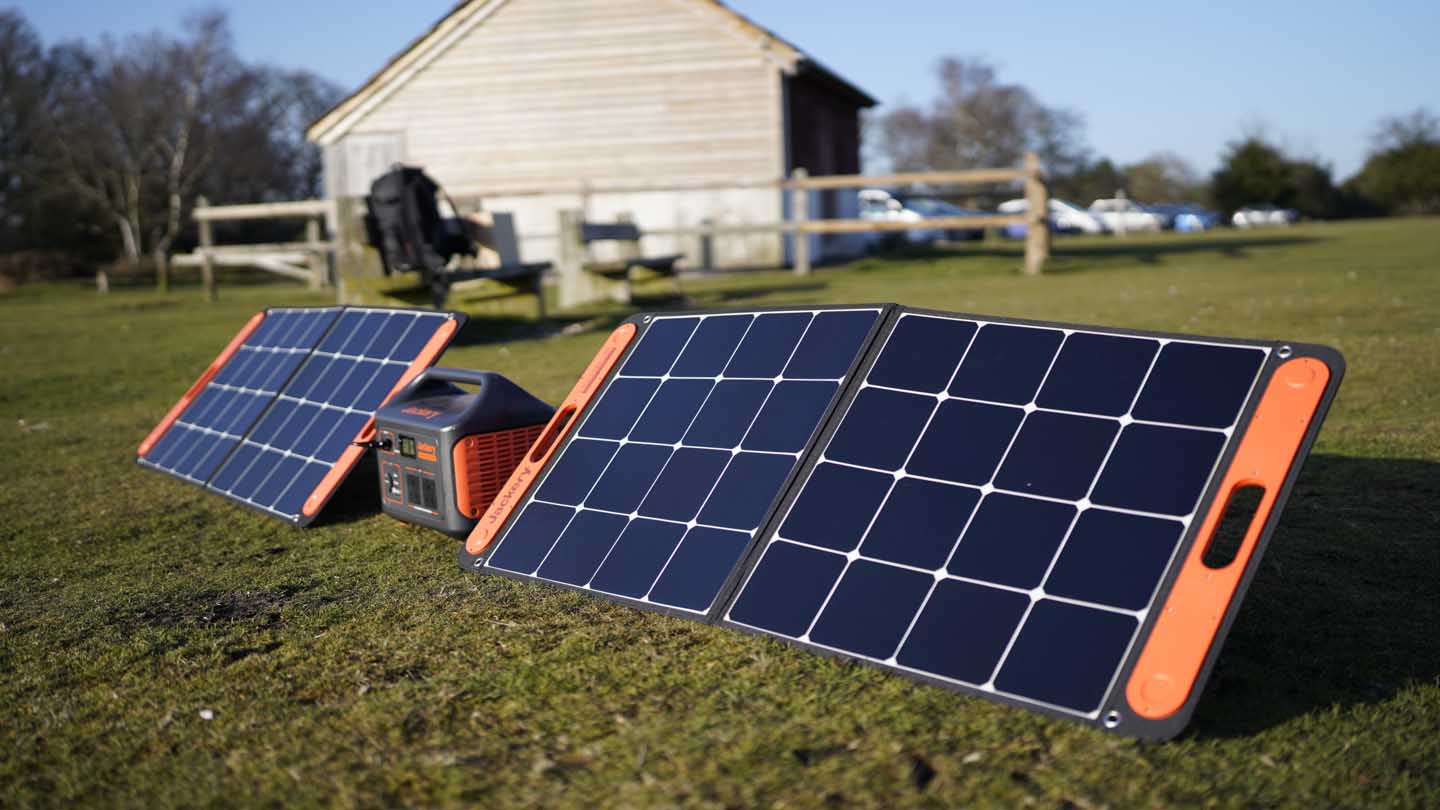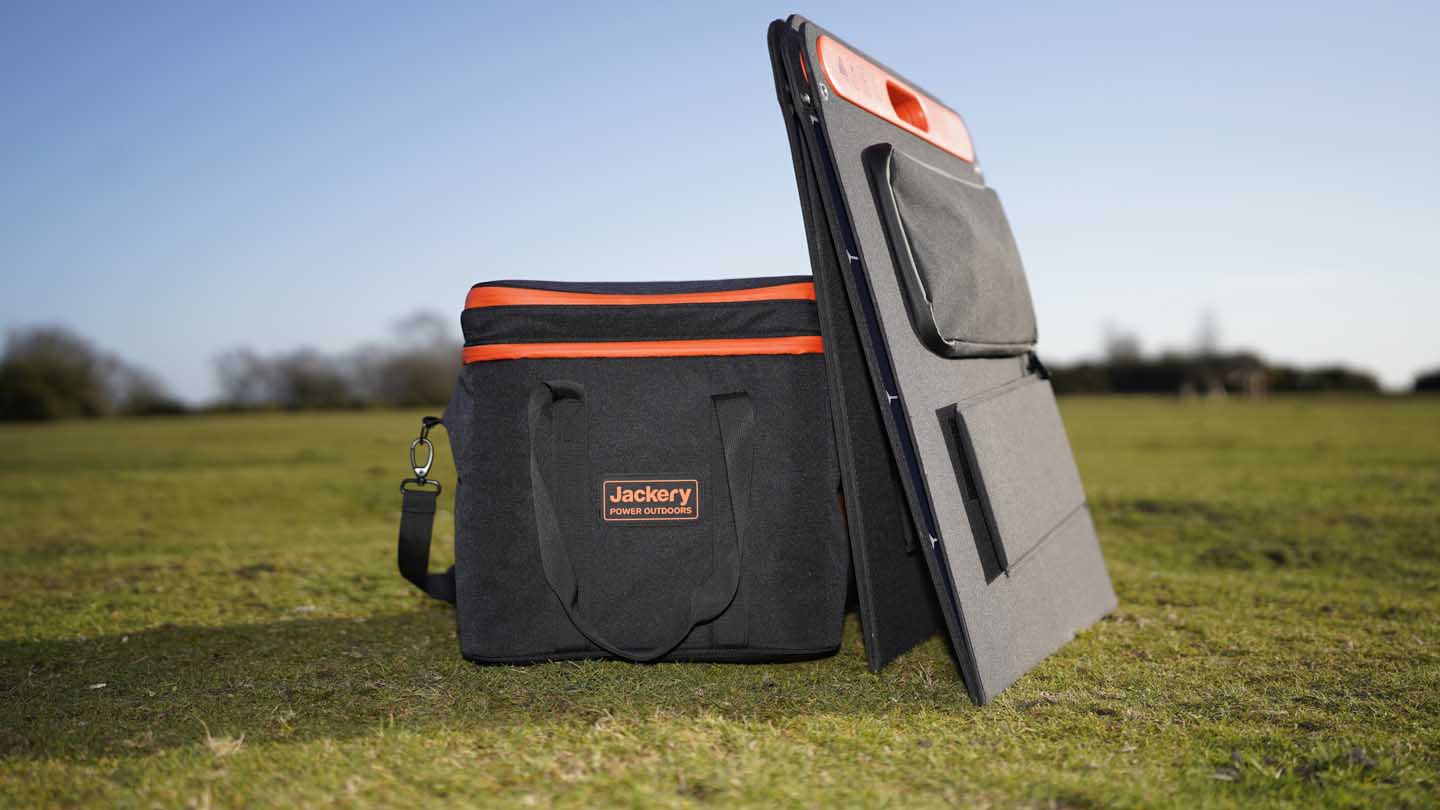Power is one of the most valuable assets when out on location, and there’s nothing worse than running out of juice partway through a shoot. I have a kit bag dedicated to power reserve with various batteries for various devices, from cameras to lighting, to avoid disaster. While this generally seems me through, I often struggle with lighting, especially computing power.
The Jackery Explorer 1000 is an electric generator that lets you plug in any device that draws up to 1000w. That’s more than enough for any battery charger, light or laptop I use during a shoot. The design is simple, and compared with the old diesel generators, it’s almost silent, just a slight whir of the fans when higher wattages are being pulled.
Think of the Jackery Explorer 1000 as one huge power pack that enables you to run many standard main devices. The UK edition that I have features two main’s sockets, two USB Type-C and two USB Type-A, all available to supply power to your devices.

But, what makes the Jackery explorer 1000 so interesting is that it doesn’t just charge from the mains there’s also a solar option. Jackery makes the Explorer electric generator and the solar panels to go with it. According to the documentation, two panels plug directly into the generator and charge up the device in just over 8 hours.
As photographers on set, this electric generator seems like a great idea and certainly enables you to cut down batteries and extension cables. But, what interests me is the ability to re-charge the generator using solely the solar, especially during the British winter.
At present, the weather conditions are challenging for any solar-driven device, the days are short, and the amount of sun around is limited. I also have a huge amount of work to catch up on, and eight full MacBook Pro-13 inch battery rechargers per charge, as highlighted in the advertising material, might not be enough to see me through this work mountain, especially as I’m using a MacBook Pro 16-inch.
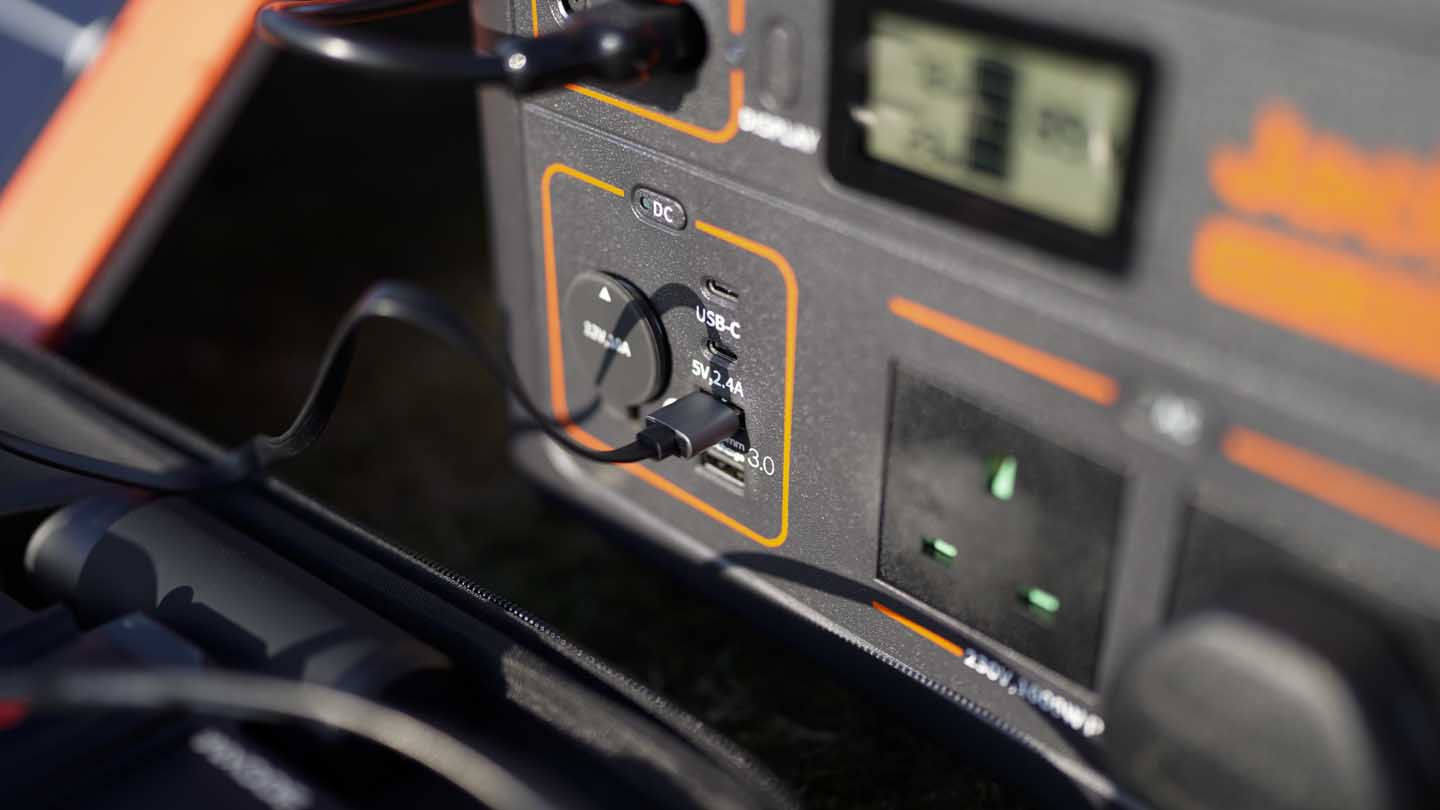
My idea is for the next month, from when I started writing this, was to run as much of my work electrical equipment from the Jackery Explorer 1000 as possible. That’s re-charging all my camera batteries, laptop and lighting.
Then as the battery depletes, on my downtime, I’ll leave it outside charging and will see where that gets me!

